A familiar veil : the microorganisms that carry our memories
Published 6 November 2023 by Taylor Smith
Since 2022, the artist Taylor Alaina Liebenstein Smith has explored the capacities of an aquatic biofilm to reveal human memories, functioning as a living photographic film. For Makery, she tells the story of her piece.
A familiar veil is the title of both a poetic video triptych and a broader three-year project, begun during an art-science residency at the marine biology research station of the Muséum National d’Histoire Naturelle (MNHN- the French National Natural History Museum) in Concarneau, via a collaboration with marine microbiologist Cédric Hubas. It then traveled to Kilpisjärvi, Finland, Sandøya, Norway and Strückhausen, Germany: rural landscapes that carry a personal importance for me and my ancestors, both human and more-than-human. In each place, human memories (in the form of text or image) were collected from local residents, and subsequently “revealed” in living photographic form, thanks to the photosensitive microorganisms collected in the same places. In the video triptych, a form of visual poetry is composed from this process of bringing memories back to life, accompanied by the voice recordings of four women from four different generations, who recite their respective memories. Each memory is told in-situ in its landscape of origin: French, Finnish, German or Norwegian. The triptych thus reveals the inextricable connections between different space-times, and the natural phenomena, microbial life forms, and embodied materiality of the memories that inhabit them.
The project ended with a series of workshops at the Marinarium museum in Concarneau and an exhibition and conference at the central site of the Muséum National d’Histoire Naturelle in Paris.
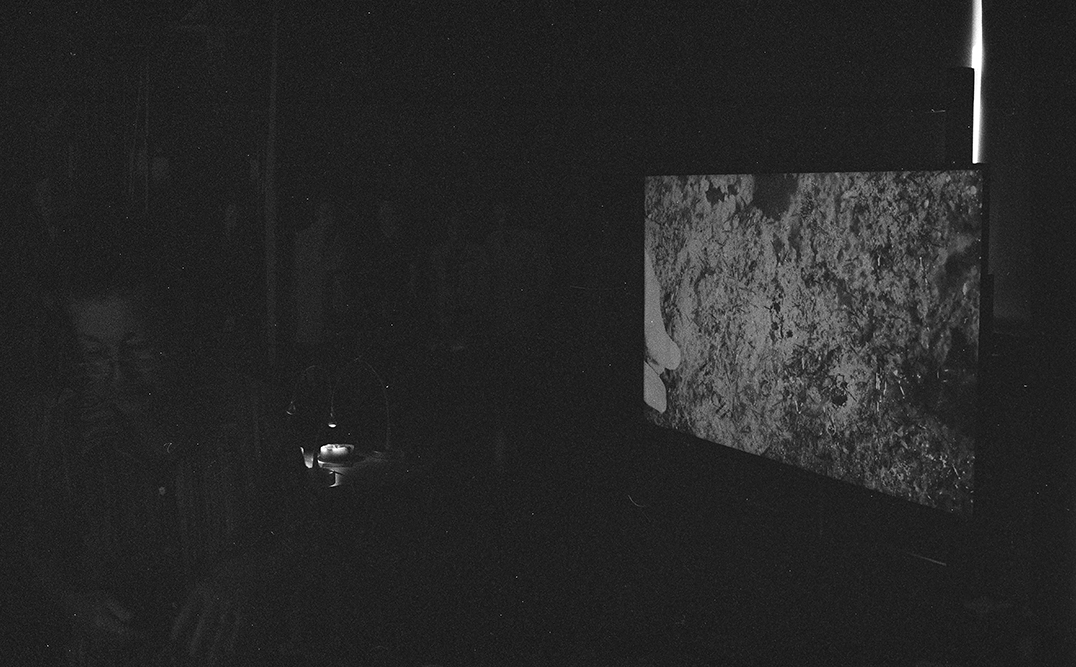
Biofilm as a metaphor for memory: its elusive materiality
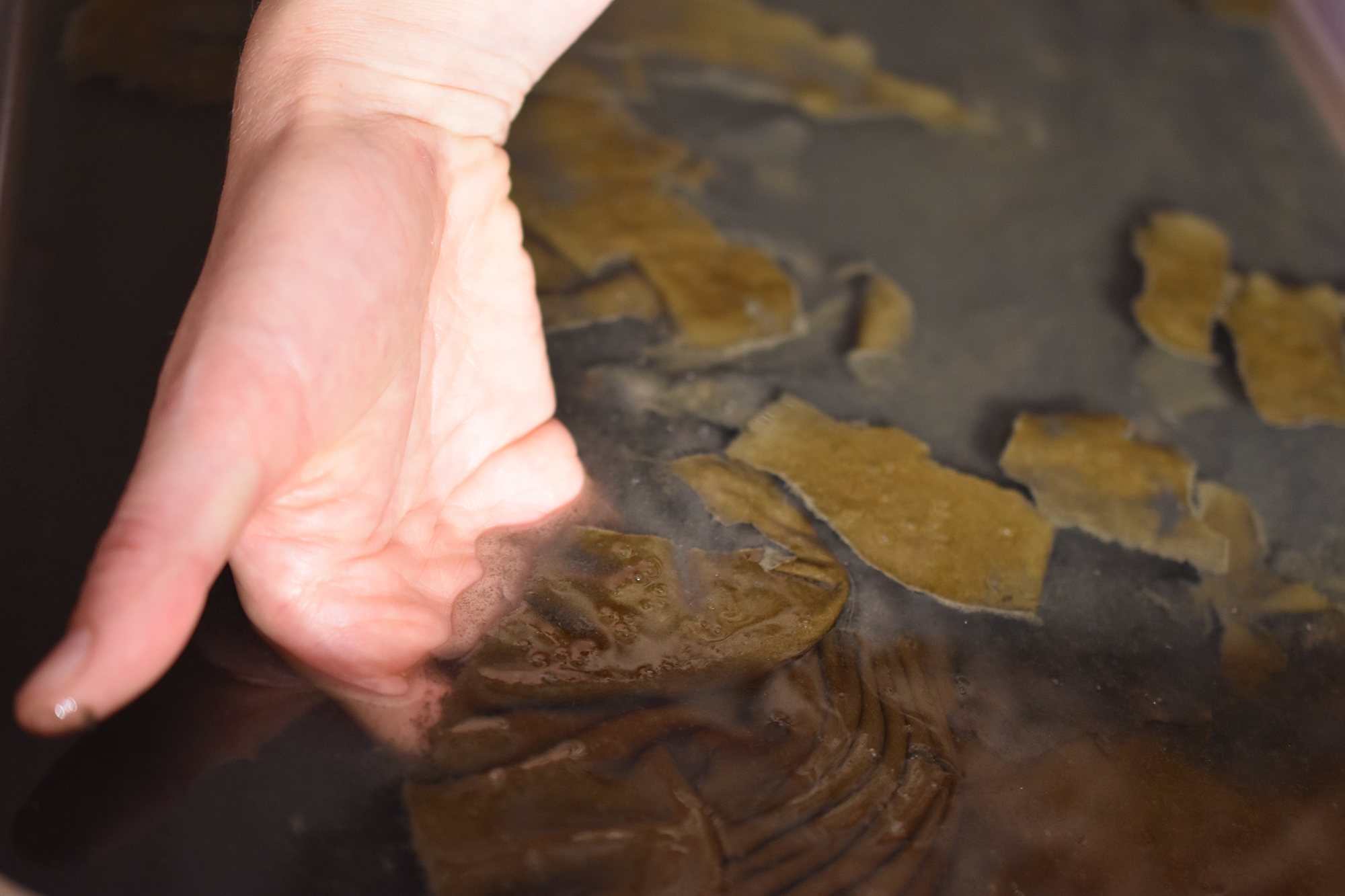
Biofilm is a very broad term used to describe a collective matrix of (photosensitive) microorganisms. It is a breathing metaphor of living memory: it incarnates both the undeniable materiality of memory, and its elusiveness. As humans, we are condemned to see the world through the veil of our subjective and fleeting memory: the matrix of stories it weaves, drawing on the material reality of the landscapes that surround us. Beyond this veil of memory, we exist thanks to the presence of another veil we tend to ignore : that which is woven by microorganisms. This microbial veil covers every internal and external surface of these same landscapes, as well as our bodies, thus intertwining itself inextricably with the veil of memory.
This project can thus be conceptualized as a veiled portal: a forever partial opening towards interspecies communication, or more broadly to biosemiotics, via an intuitive, sentient, material, corporal approach… one that must pass through our human eyes and hands before it can reach our thoughts.
In order to better explain the scientific roots of the project, I’ll first attempt to define biofilm, the specialty of my collaborator, Cédric Hubas. In biology, biofilm or “microbial mat” is a broad term. Cédric focuses primarily on what are referred to as “epibenthic transient biofilms” of the intertidal zone: the elusive biofilms of mudflats, which attach themselves to the surface of the mud when the tide recedes, only to dissolve back into the water when it returns.
Biofilm is just as difficult to grasp with words as it is with our hands. It is both a material and living matrix that finds itself in a perpetual in-between state: solid/liquid, night/day, individual/community, aquatic/terrestrial. It is a layer of life composed of microorganisms, held together by the natural glue of “EPS” proteins and lipids in a symbiotic net. Sometimes this net, or matrix, is stuck to a surface: a rock, or our drainage pipes and bones… other times it floats freely in the ocean.
Revealing images through the biofilm’s photosensitivity
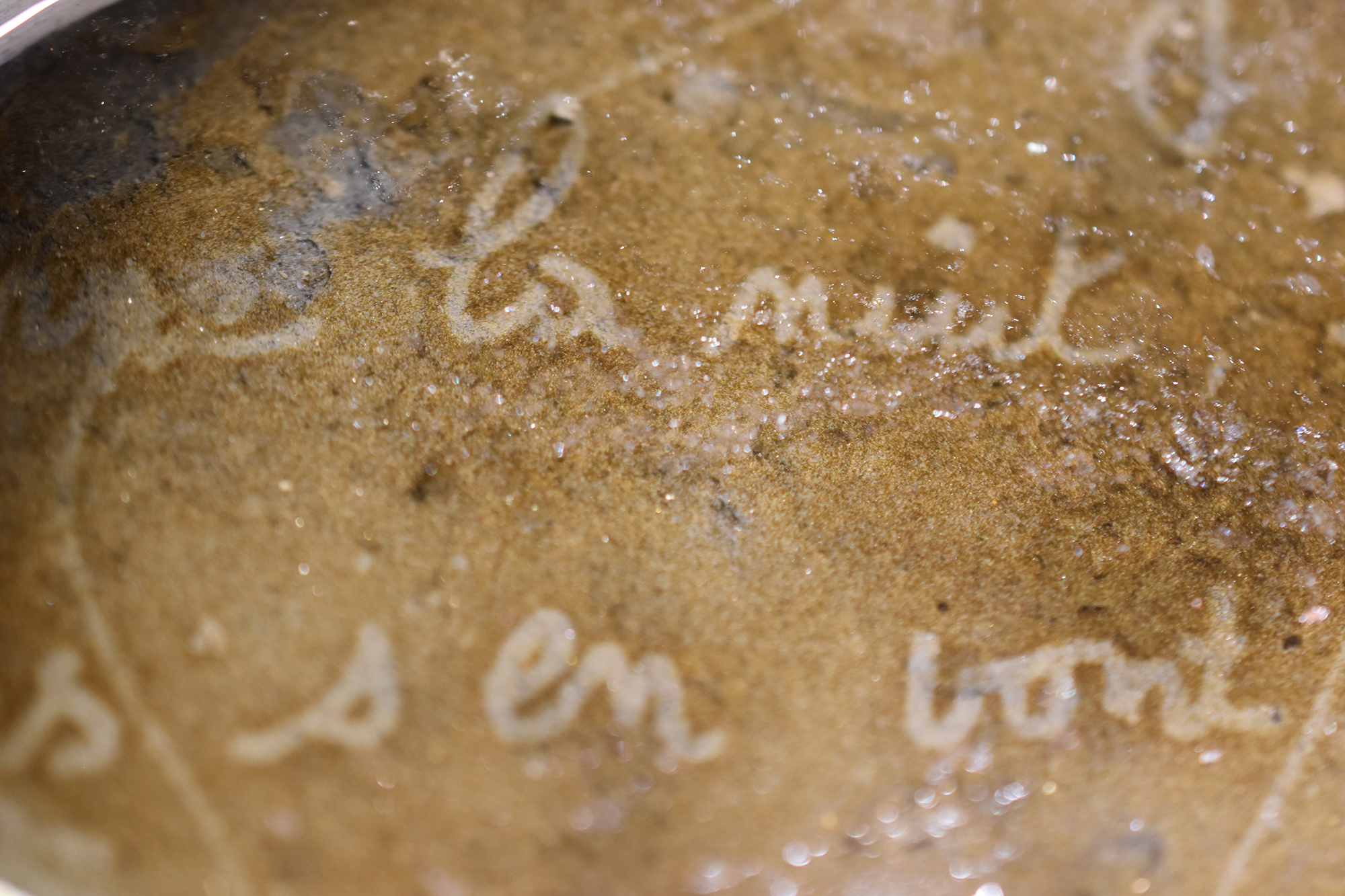
At the origin of life on Earth, 3.5 billion years ago, diverse aquatic biofilms began to evolve slowly and subtly. They finally managed to anchor themselves to rocks, forming a marine crust: the stromatolite, then finally a terrestrial crust: biocrust. Biocrust, this “living skin of the earth” (Cf. Fernando Maestre) is often composed of photosynthetic, and photosensitive, beings (lichens, cyanobacteria, etc.) and illustrates the terrestrial traces of our aquatic ancestors. Lacking roots, over the course of our planet’s long history, biofilms have been violently ripped from Earth’s solid surface, dispersed in water, re-formed and, sometimes, hardened into biocrust.
In the face of climate change, biofilm and biocrust remain communities of numerous bio-indicator species. They still cover our planet like a luminous skin, a photosensitive film that captures the imprints of everything else, including our destructive human activities.
A bit like the famous deep scattering layer, which migrates in synchrony from the depths of the ocean to its surface at night, only to re-descend at daybreak, diatoms, (the photosensitive micro-algae which compose the biofilm studied by Cédric), also migrate in correlation to the Circadian rhythm. They move up and down within the biofilm matrix according to this 24-hour cycle, a predictable movement that can be perturbed by the more random variations of natural and artificial light in their environment. Diatoms are, simply stated, photosensitive, which for us means that they spend their lives revealing and erasing images. Cédric and I attempt to use light to interfere at precise moments in the Circadian rhythm, in order to make the diatoms’ hidden images visible, and also to project our own images onto them.
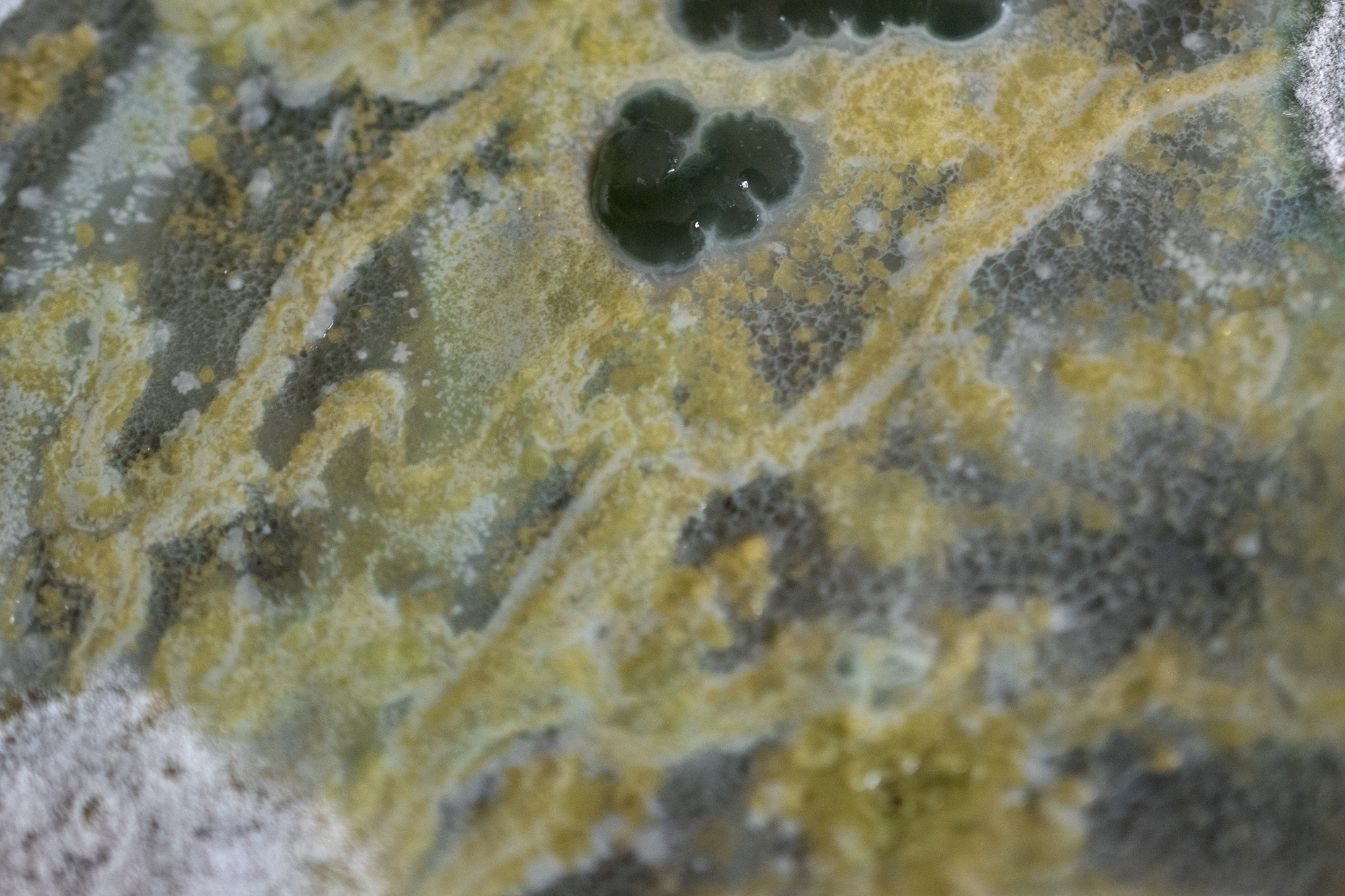
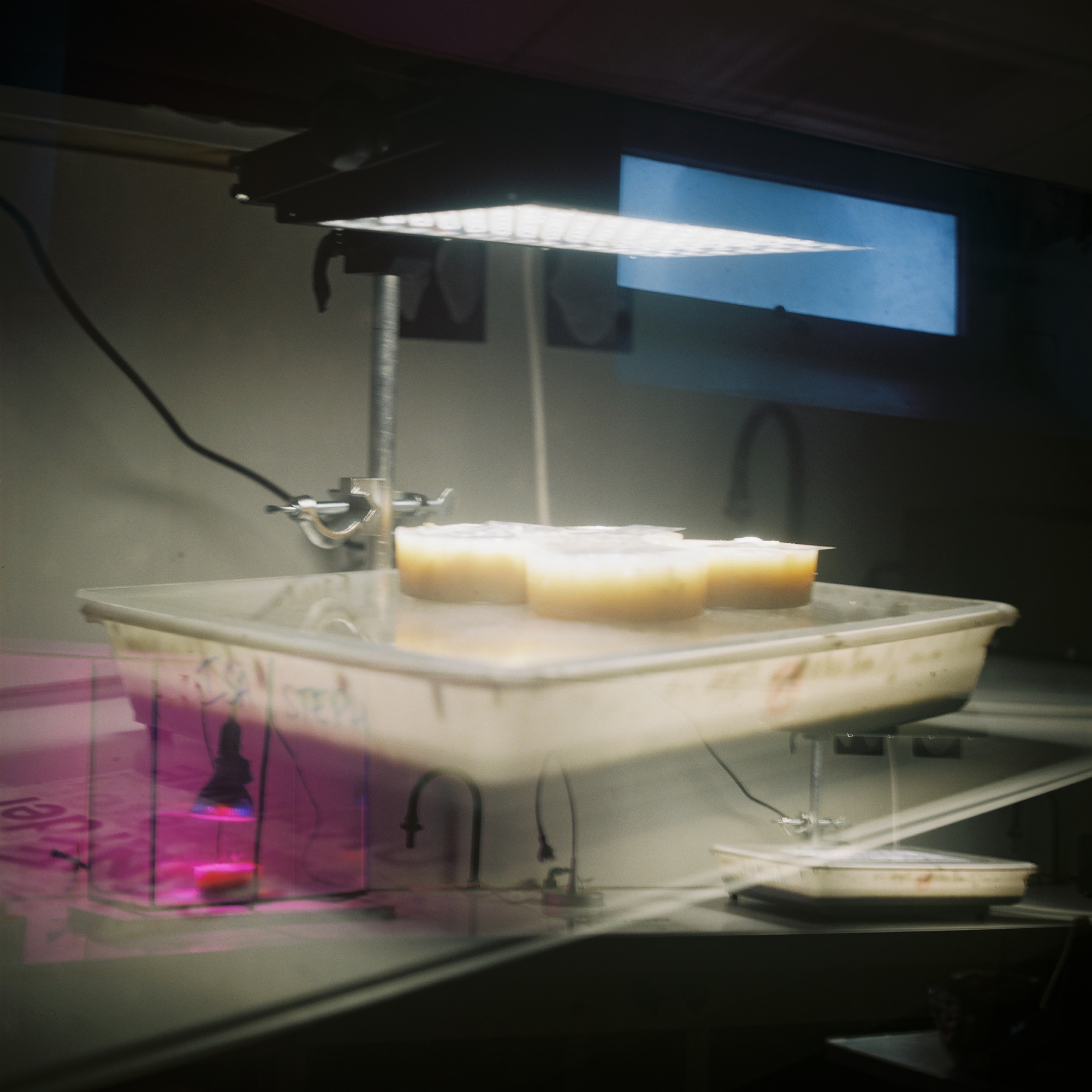
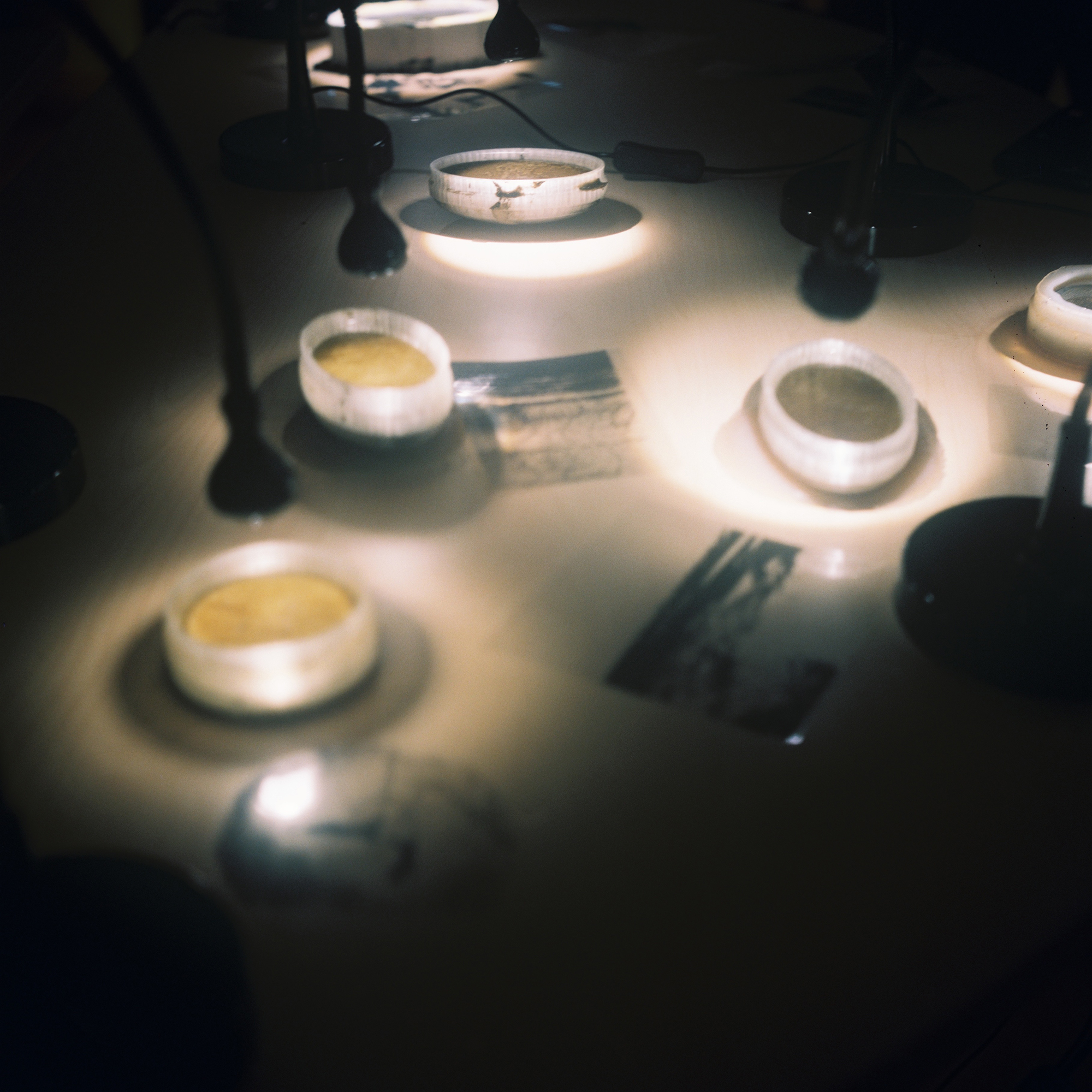
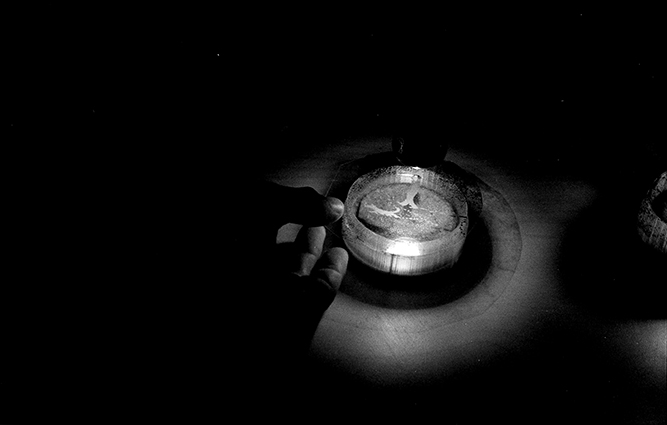
Agar agar molds and 3D scans
In order to pursue my research with Cédric, I was welcomed as an artist-in-residence at the marine biology research station of the Muséum National d’Histoire Naturelle (MNHN) in Concarneau, France. The residency was divided into four visits, spread between February 2022 and September 2023. With Cédric and his team, particularly Caroline Doose and Élisabeth Riera, I explored the role of these infinitely small, forgotten beings that compose biofilms as image-makers, attempting to collaborate with them in order to intervene subtly in-situ, via a series of micro-performative gestures.
I began by carrying, for example, photographic negatives holding traces of my own memories (in the form of text or image), with me into various landscapes, in search of microcosms inhabited by photosensitive biofilms. I stopped, for instance, at the tidal pools and mudflats around the marine station and the Atlantic coastline. Via encounters between light, biofilm and the negatives, a series of “micro-revelations” of these memories took place. I captured these fleeting moments via photography (analog and digital) and video, in order to create longer-lasting artworks.
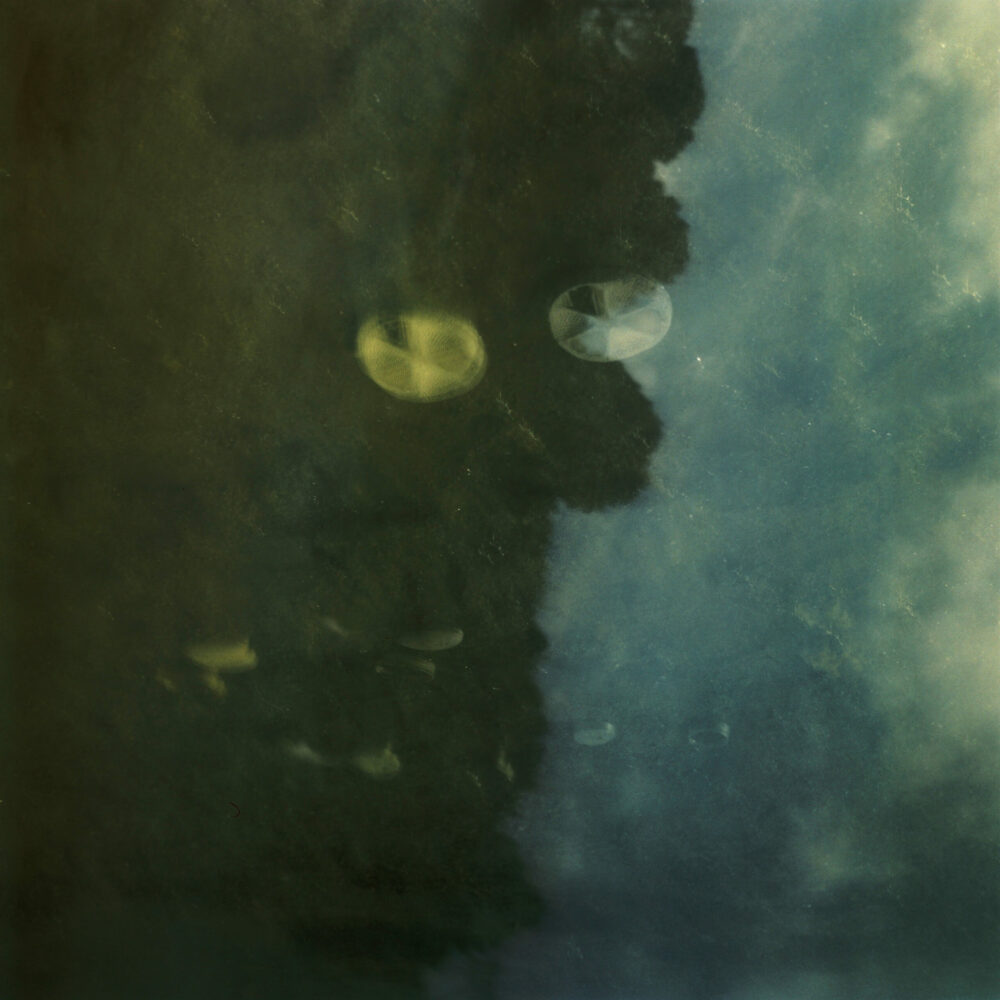
I then repeated these experiences in-situ in other landscapes in Norway, Finland, and Germany, incorporating others’ memories that were more specifically tied to these landscapes. Through this accumulation of experiences and my research and conversations with Cédric, Caroline, Élisabeth and other researchers at the station marine, the initial project began to expand. I began to mold the tidal pools— these concave niches where I found the biofilm growing naturally— in agar agar, a biodegradable powder made from algae of the gelidium family, which transforms into a solid gel when heated in water. Agar agar proved to be the perfect material for in-situ casting, since it captures all of the minute details of an object without leaving any polluting traces. These experimentations captured the attention of Élisabeth Riera in the context of her research on new forms for artificial reefs. We began working together to 3D scan natural and synthetic objects that the biofilm covers: algae, tidal pool crevices, and boat relics that remain buried in mudflats until they’re revealed at low-tide. With the marine station’s 3D printer, and though a collaboration with the Konkarlab, the fablab of Concarneau, I began 3D printing a series of mimetic objects with PHA, a biodegradable 3D filament both generated and composted by other bacteria.
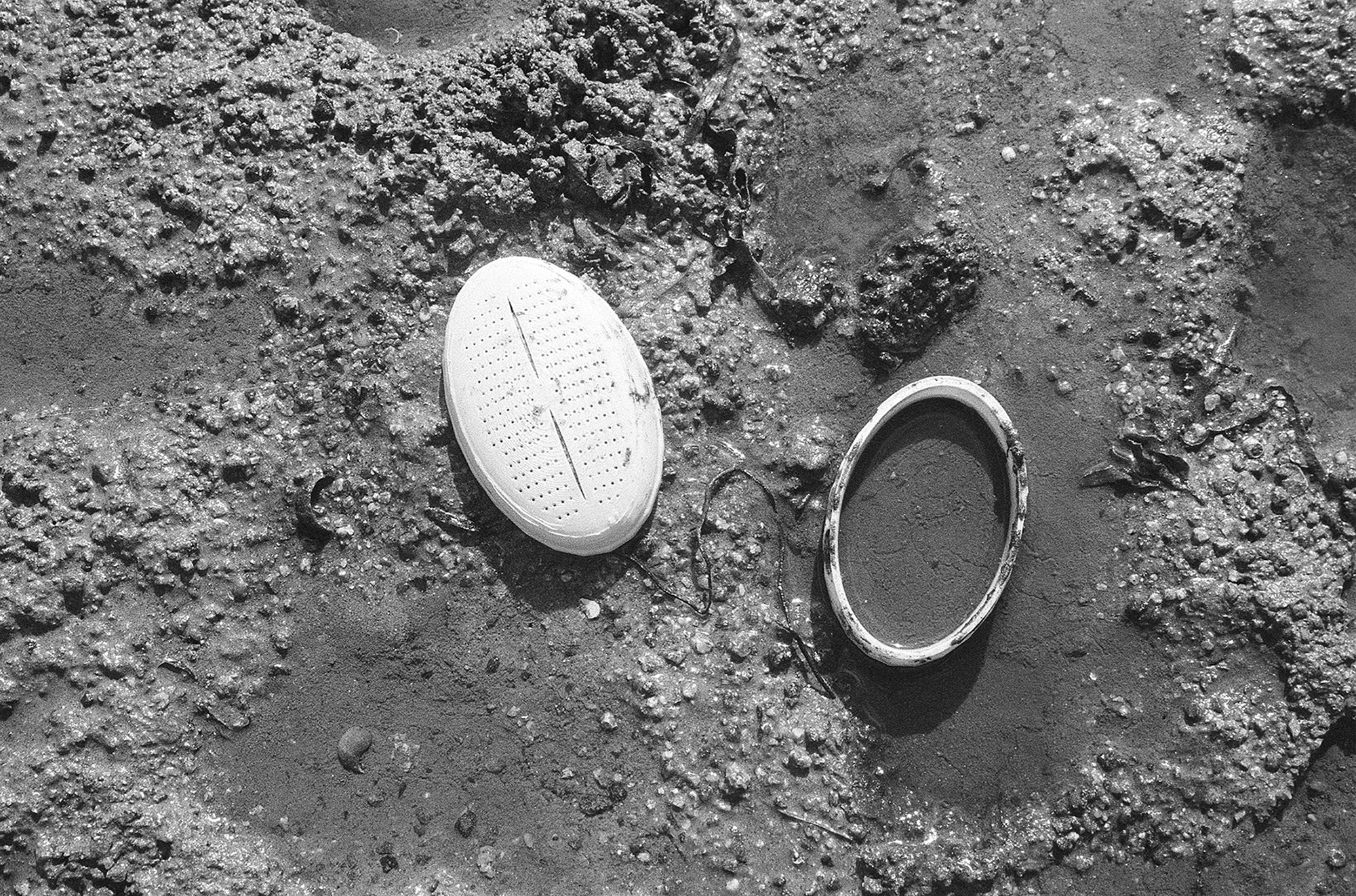
Thanks to pre-existing open-source 3D models, I was also able to print reproductions of frustules, or the silica (glass) shells of diatoms that protect their photosensitive bodies, on a larger scale. As one can see in the SEM (scanning electron microscope) images, these frustules naturally take on box or container-like forms, with extremely detailed patterns. Similar to sarcophagi or various boxes we use to hold our memories, these mimetic objects became “memory holders” or sculpture-containers for the biofilm during a series of memory revelation workshops I organized at the Marinarium.
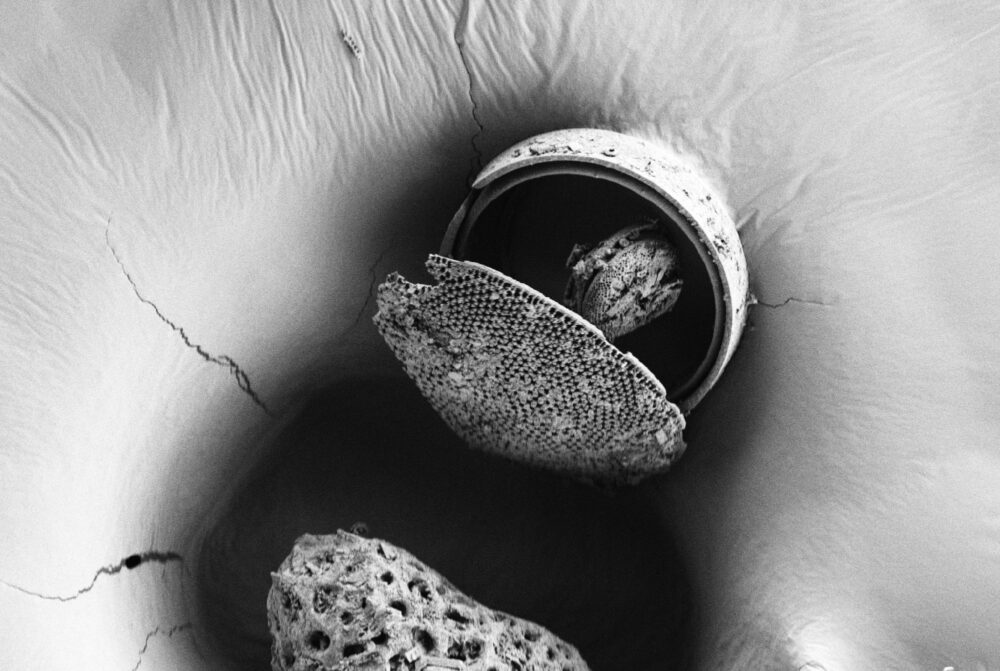
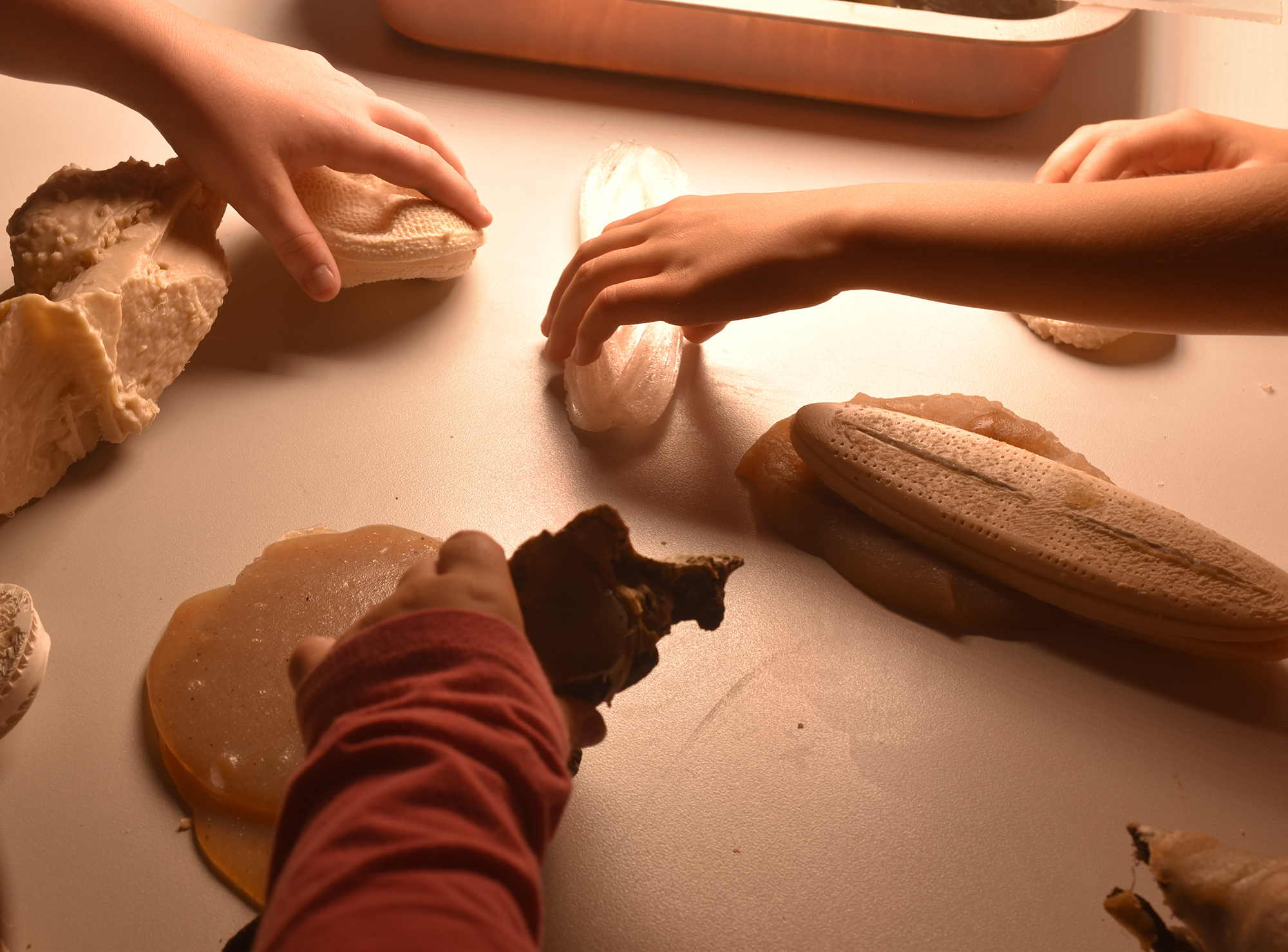
In April and September 2023, I led three memory revelation workshops with the public at the Marinarium, the museum attached to the Concarneau marine station. The participants (children and adults) were invited to each send me a memory of choice, in the form of a drawing, text or photograph. I then transformed each memory into a photographic negative, which was placed by the participant over one of the biodegradable containers (molded in agar agar or 3D printed in PHA) in the form of a diatom frustule, holding the biofilm. Placed below LED lights, these containers were then exposed to light and the participants watched as, little by little, their memories re-appeared on the surface of the biofilm. The memories were either reproduced identically, reinterpreted, or erased by the photosensitive diatoms, depending on many uncontrollable factors. The unpredictability of the experience contributed to its magic, and the participants’ understanding that this was indeed a collaboration with living beings, and not the simple illustration of a photographic technique.
Opening the veiled portal to biofilm inevitably reveals a mirror. The encounter with these microorganisms sends us back to ourselves, yet with a heightened awareness of the infinitely complex matrix of species that constitutes the landscapes we inhabit, and the memories we project onto them.
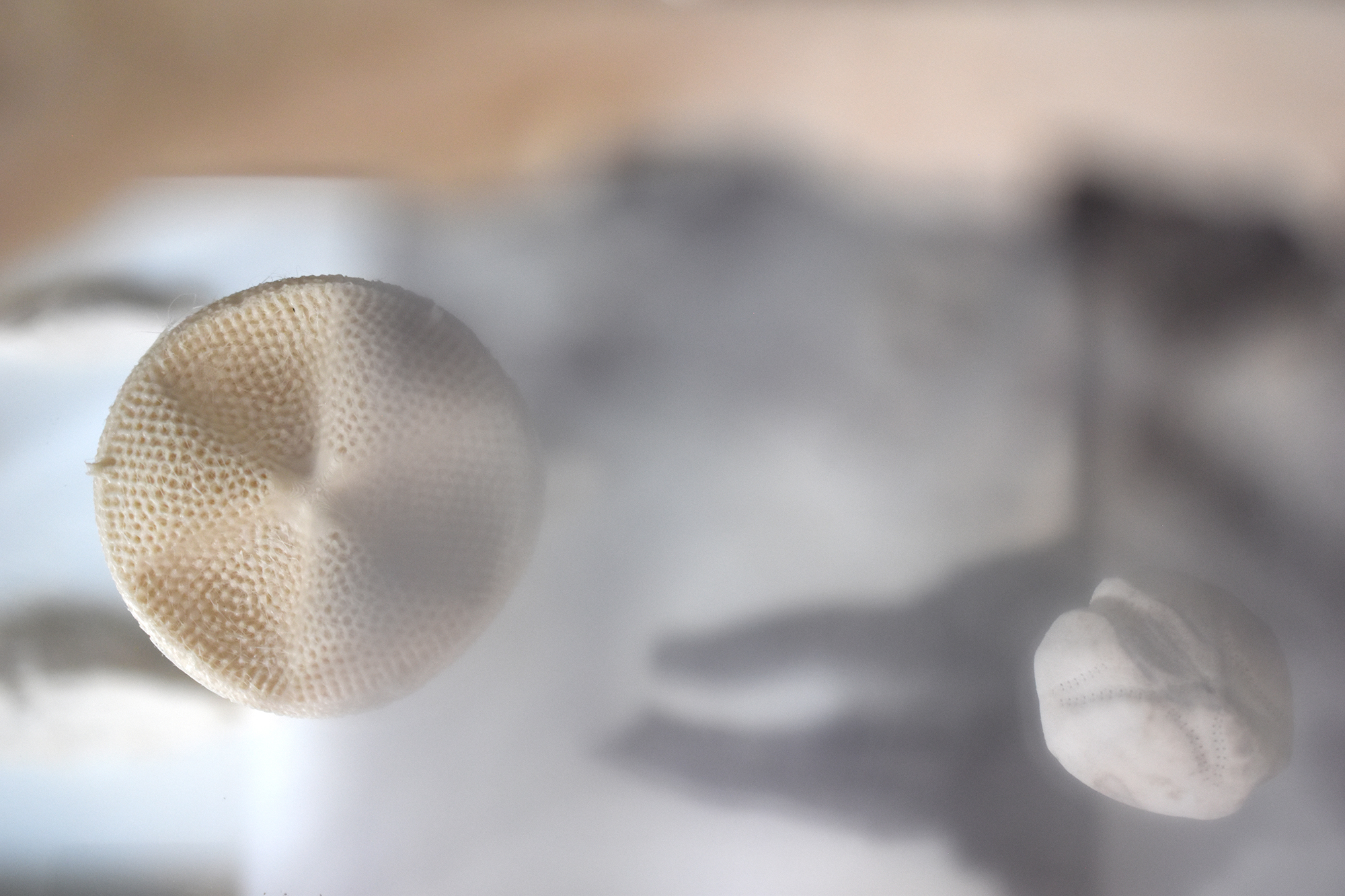
A long version of this report is published on Roscosmoe.org
Taylor Alaina Liebenstein Smith’s website
Taylor Alaina Liebenstein Smith is the recipient of a mobility grant awarded as part of the Rewilding Cultures cooperation project co-financed by the European Union’s Creative Europe program.
